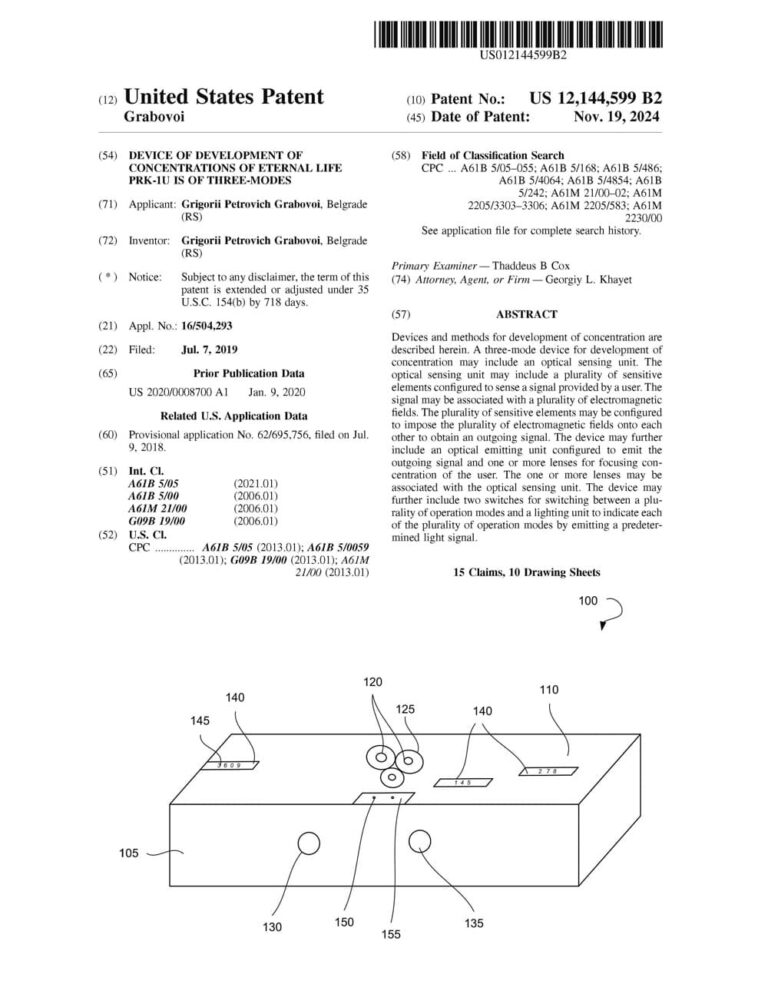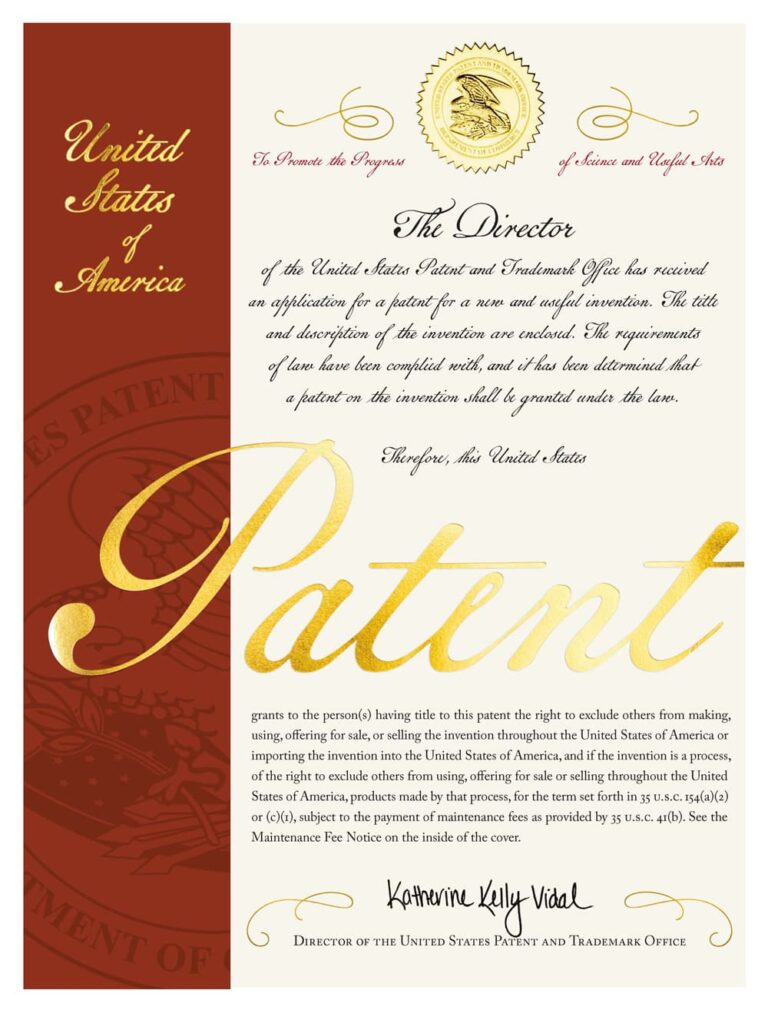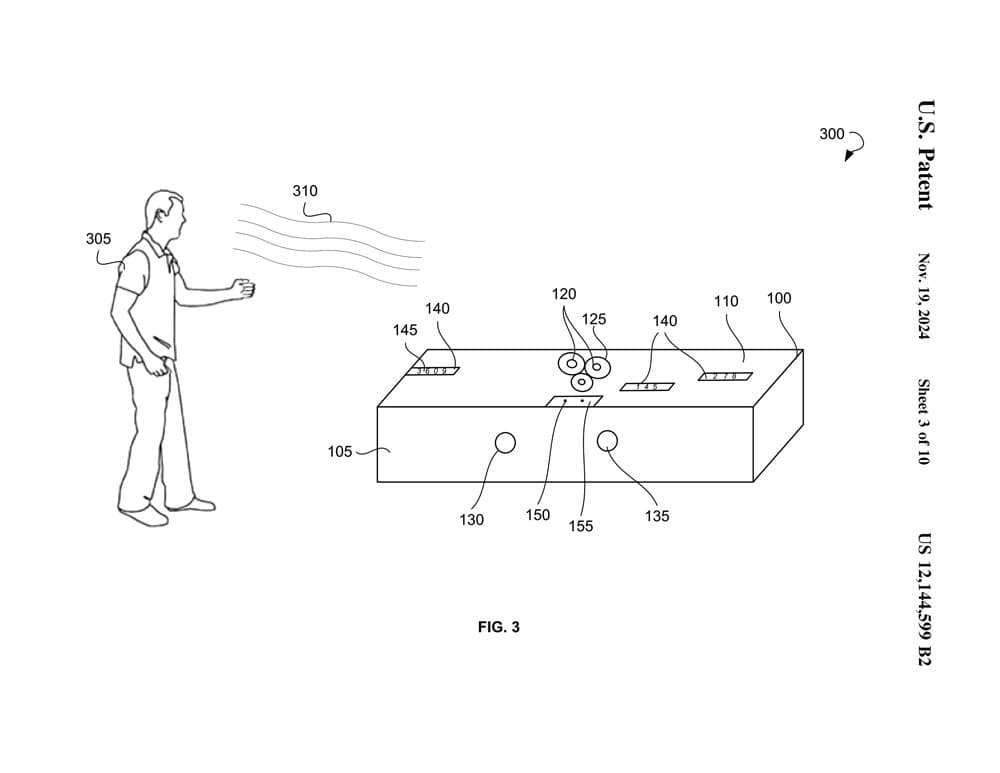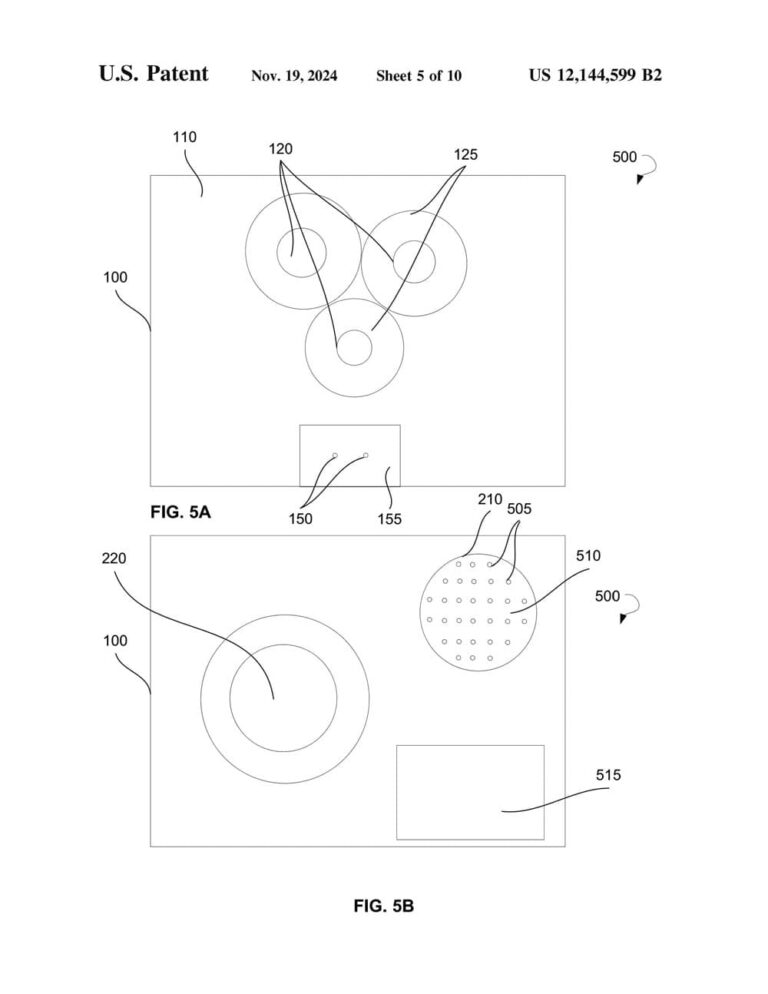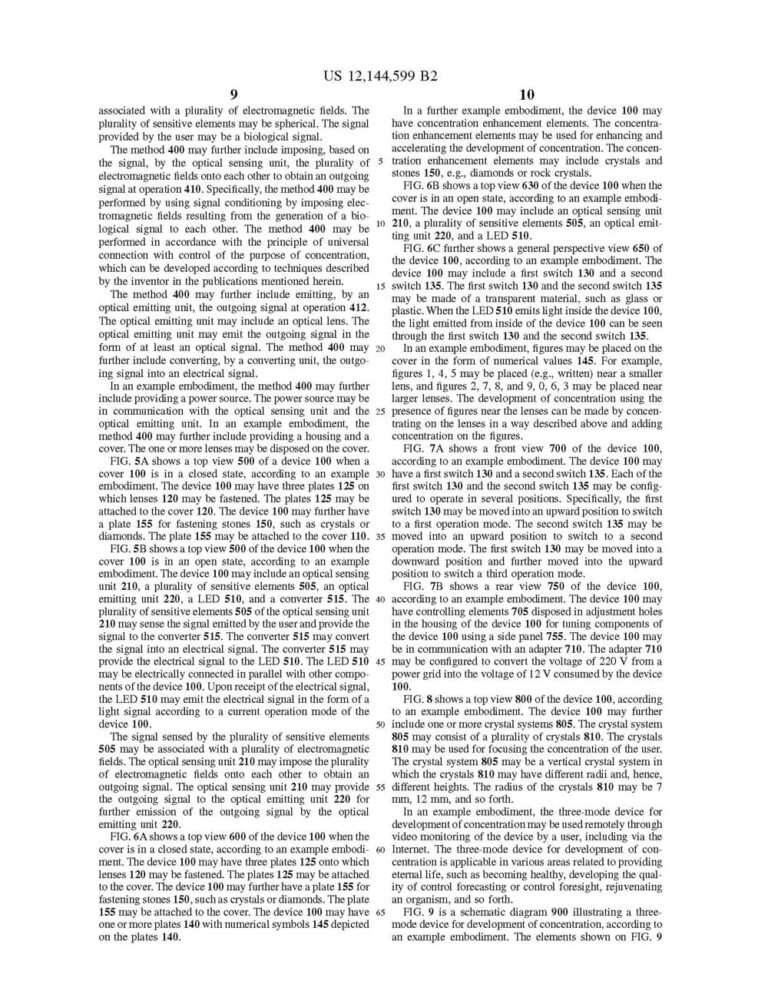The Technology of G. Grabovoï
validated by the US Patent Office:
Worldwide recognition
On 19 November 2024, the three-mode PRK-1U device made history.
Why a US patent?
is an international benchmark
Be validated by the United States Patent and Trademark Office (USPTO) is a crucial step in the recognition of an innovation. Known for its standards of excellence, the USPTO applies strict criteria to certify that an invention is genuinely new, useful and non-obvious.
This US patent offers its holder robust legal protection in one of the world's largest markets. It also embodies scientific and technical recognition that transcends borders, reinforcing the credibility and value of the invention.

Validation after 5 years of rigour and expertise
Filed on 7 July 2019The patent describing the technology developed by Grigori Grabovoi underwent a rigorous assessment process. In-depth examination of every technical aspect, combined with a worldwide prior art search, demonstrated the uniqueness and applicability of the invention.
The 19 November 2024After more than five years of detailed analysis, the USPTO issued its validation. This delay, which is common for complex innovations, underlines the importance and depth of the process. This recognition establishes the invention as a major breakthrough and marks a decisive stage in its international dissemination.
To consult it on the USPTO website Publication no. 12144599
A bold patent
PRK-1U technology is unique.
As an official seller, we are honoured to make this unique innovation, now protected by a US patent, available. This technology uses advanced scientific principles to improve concentration, mental control and overall well-being.
It is based on the interaction between human electromagnetic fields and optical elements specifically designed to enhance your cognitive abilities.
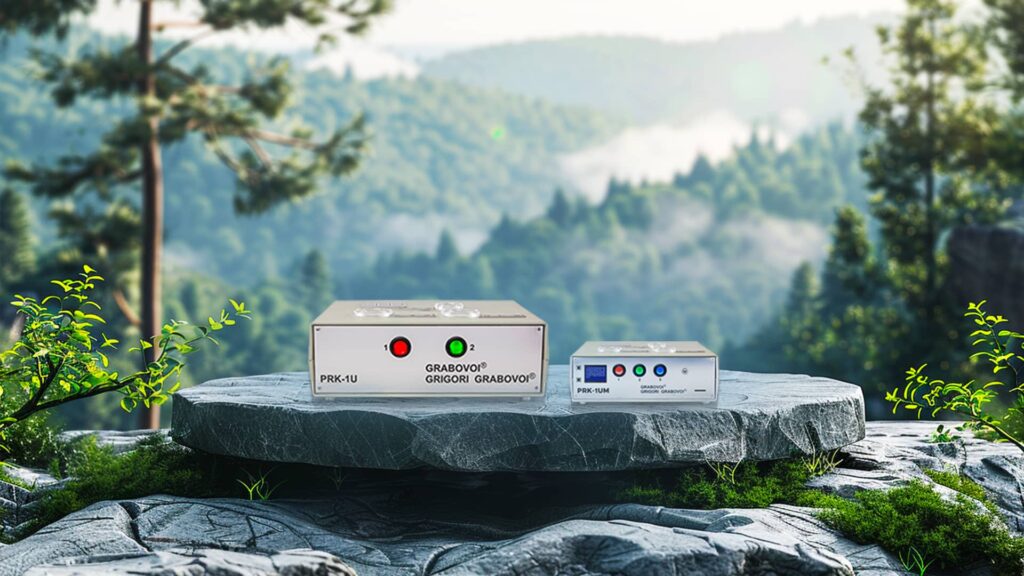
Let's celebrate this breakthrough!
A revolutionary advance within your reach
This patent protects PRK-1U devices with 3 modes - including the PRK-1UM - revolutionary devices designed to develop concentration and enhance cognitive skills thanks to an advanced scientific approach.
Based on the interaction of human electromagnetic fields and patented optical technologies, these devices focus the mind to improve mental clarity, well-being and goal management.
A guarantee of excellence and legitimacy
Validation by theUSPTO adds an extra dimension to this technology, making it one of the most rigorous and reliable solutions on the market.
This guarantees that you are investing in a tool that not only has a solid scientific basis, but also legal protection in one of the world's most competitive markets.
For an audience
visionary
These devices do more than simply support you in your current practices: they open the door to infinite possibilities for exploring your potential and harmonising your daily life.
These schemes are aimed at curious and innovative minds, keen to explore new ways of enhancing their personal capabilities.
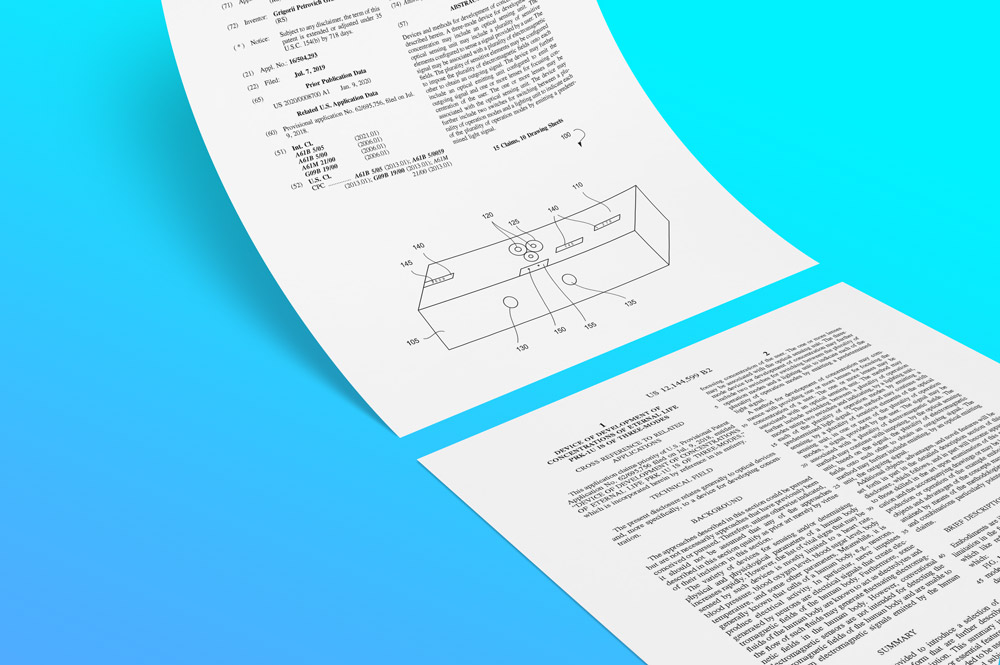
As psychologists know, the more intensely a person concentrates on a goal, the more the events in their life are optimised and the goal is achieved more quickly. When concentrating, the user can perform the following actions: the user can imagine that his consciousness is a sphere surrounding his body, a sphere that is supported informally by the user's own body. Next, the user can imagine that the sphere is transformed into a shape similar to that of their own body, and that this shape is superimposed on the surface of their body. At the moment of superimposition, the user can imagine that the inner surface of the body shape comes into contact with the surface of his body and that the radiation coming from the outer surface of this body shape spreads throughout the infinite space external to the user's body. This infinite space is considered to be the eternal reality connected to the user's organism, leading to the development of concentration on eternal life.
The devices and methods described here are based on the principle of similarity. This principle is based on the theory of wave synthesis in combination with the theory of unified reality (see doctoral thesis in physical and mathematical sciences by G. P. Grabovoi, entitled "Research and analysis of fundamental definitions of optical systems for the prediction of industrial earthquakes and disasters", Moscow, RAEN Publishing House, 1999, pp. 9-19; Inventor's Patent No. RU 2148845C1 entitled "Method of disaster prevention and equipment for its realization"; and Inventor's Patent No. RU 2163419C1 entitled "Data transmission system", which are incorporated herein by reference in their entirety).Extract from the patent: DEVICE OF DEVELOPMENT OF CONCENTRATIONS OF ETERNAL LIFE PRK-1U IS OF THREE-MODES, 19 November 2024
The devices and methods are also based on physical and mathematical theory, experimental results, physical and mathematical calculations, as well as the results of these calculations set out in the publication entitled "Research and Analysis of Fundamental Definitions of Optical Systems in Disaster Prevention and Microprocessor Predictive Control", "Electronic Equipment, Series 3, Microelectronics", 1999, Issue 1 (153), and other scientific materials.
According to the theory of wave synthesis, reality can be considered as a periodic intersection of stationary and dynamic regions, while in the areas of intersection, a synthesis of a dynamic wave and a stationary wave occurs. All reality phenomena can be defined in terms of optical systems. Human perception is achieved using elements that carry luminous images containing information. When information is transmitted by a person generating this information to a sensitive optical element, the person can be considered as a transmitting optical system. The transmitted information, generated by the person's thoughts, is received by an optical sensing unit to which the person directs his or her thoughts. Since a thought is an electromagnetic wave, it can be transmitted as part of an optical system. The sensitive elements of the optical detection unit are preferably spherical in shape, as this provides maximum activation of the sensitive element due to the internal reflection of the signals. The collection of testimonials and results from the use of the PRK-1U three-mode device for concentration development is presented in the appendix to this specification.
The three-mode device for developing concentration superimposes fields generated by biological signals and electromagnetic fields (electromagnetic waves generated by the user) according to the principle of universal connection with the control of the concentration objective. The device also develops concentration on creative control.
In the theory of wave synthesis, it is established that a thought, generated in the form of radiation, simultaneously possesses two quantum states. The first state is located on a sensitive element of a signal transmitter, and the second on a signal receiver. Based on these principles, the device for interacting with thoughts to develop concentration, as described here, was designed.Extract from the patent: DEVICE OF DEVELOPMENT OF CONCENTRATIONS OF ETERNAL LIFE PRK-1U IS OF THREE-MODES, 19 November 2024

FIG. 3 is a diagram (300) illustrating the development of a user's concentration using a three-mode device (100) for the development of concentration, in accordance with an example embodiment. A user (305) may be in the vicinity of the device (100). The user (305) may focus their attention on the lenses (120) and/or on the digital figures (145) of the device (100). The lenses (120) may have different diameters. While concentrating, the user (305) generates thoughts, which are electromagnetic signals (310). These thoughts may contain the objective of the concentration, such as concentrating on eternal life, concentrating on health, acquiring the quality of predicting or anticipating control, concentrating on rejuvenation, and so on.
The action of concentration for the present time and the future can be performed with respect to a receiving element of the optical transmitter unit composed of lenses. The user (305) can make circular movements associated with concentration (i.e. directing thoughts) in a direction from a smaller diameter lens to larger diameter lenses in a counter-clockwise direction. In the case of concentrations related to present and future time, a concentration beam may be directed in a direction from outside the device (100) to a space inside the device (100).
If the user's concentration (305) is related to past events, the user (305) can make circular movements associated with concentration in a clockwise direction from a smaller diameter lens to larger diameter lenses. The focus beam can be directed in a direction from inside the device (100) to an external space.
In accordance with information transmission based on wave synthesis theory, a further quantum state of mind can be projected onto a signal receiver in the form of an optical transmitter unit located inside the device (100).Extract from the patent: DEVICE OF DEVELOPMENT OF CONCENTRATIONS OF ETERNAL LIFE PRK-1U IS OF THREE-MODES, 19 November 2024
Discover a patented technology
which increases concentration and amplifies your biosignal.
With this official validation, Grabovoi's technology is one of the most innovative and promising solutions of our time.
Make the choice of excellence and join our movement, come and discover how this tool can transform your life.

